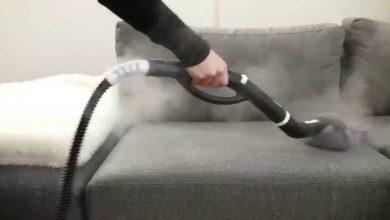3 Ways Custom Cardboard Boxes Can Boost Your Small Business

The physical packaging that holds the contents of your subscription enterprise may be key in enhancing customer revel in and driving down churn. It’s right here that your personal your brand; it’s a visual storyboard that has to both excite the purchaser and paintings to your benefit, spelling out calls to action for the client and adding a fee to the unboxing experience.
Organizing, designing, and ordering cardboard boxes, however, can be hard. What kind of packaging exists? How does it genuinely get created? What’s a very good fee? How many do I should order?
These are all questions new and present subscription commercial enterprise owners need to be considering if they’re getting equipped for their first order. Below, we’ve outlined the answers to those questions (and more) and could take you from inception to finished order on what to anticipate and the way to maneuver at some stage in your first custom packaging order.
You can also download a tick list for placing your first order.
This guide will cover:
- The one-of-a-kind sorts of packaging to be had
- The styles of printing for creating custom bins
- How to pick a length
- How to create a design
- How to discover the proper manufacturer
- Knowing what a “properly” charge is
- How to vicinity and order
Part 1: The Types of Custom Packaging Available
Let’s begin at the start: the forms of cardboard boxes and packaging available. While many use the phrase ‘box’ of their name, your subscription enterprise is by no means stuck with a box for packaging. There are many packaging alternatives in the back of the everyday box, consisting of:
Padded/Bubble Mailers: Bubble or padded mailers the use of a supply of safety at once in the packaging layout.
- Mailer Boxes: Mailer Boxes are smaller-sized containers, about the scale of document envelopes, however with rectangular facets.
- Custom Mailer Envelopes: Mailer envelopes are normal, flexible traditional mailing envelopes.
- Rigid Envelopes: Rigid envelopes use a paperboard layer to feature rigidity and sturdiness to the bundle.
When selecting the sort of packaging you’ll use, you need to reflect on consideration on the contents of your box, their sizes, and the way fragile they are. In the instances of huge, fragile items, the conventional field mailer can be the fine alternative available.
Questions to recall:
- What are the biggest objects I will include in my subscription?
- What is the maximum fragile object I will consist of in my subscription?
Part 2: Learn How Packaging is printed
Once you’ve got your type of packaging selected, you could begin to think about how you want that packaging created.
When it involves printing, there are three number one varieties of printing strategies used for custom packaging:
- Flexographic Printing: Flexographic printing is the most common shape of custom box printing. The manner it really works is just like a rubber stamp on a large scale – a printing plate along with your field’s design acts as a huge ink pad that spins on a rotary drum, picking up ink after which stamping it onto your corrugated container.
- Related Costs: Flexographic printing calls for a printing plate to be created. This is the custom rubber stamp used to stamp your layout onto your subscription box. Price varies, but you could expect around $one thousand according to the plate. You’ll need a completely unique plate for each color, so if you use four colorings on your container, you will need four printing plates.
- Minimums: Due to the machinery worried in flexographic printing, most producers require around a thousand box minimums for every run.
- Digital Printing: Digital printing is more not unusual for smaller-sized orders. Digital printing is much like your preferred laser jet printer you might use at domestic. The device mixes the inks and without delay applies the shade and layout to the container.
- Related Posts: Digital printing is commonly 3-5x more luxurious than flexographic printing on a small scale. While there is gear that permits for massive runs, usually it’s easier and more cost-effective to transition to flexographic printing.
- Minimums: Digital printing calls for a lot smaller minimums, with the caveat that the fees are a great deal pricier.
- Litho Label Printing: Litho label printing, brief for lithographic, affords a much cleaner, higher resolution printing that features a bit like wallpaper. Unlike printing that occurs on the physical field, litho label printing is outlined onto a paper sheet, processed, reduce, and then attached to the container through a form of adhesive. When an entire container is protected in a lithe label, it’s known as a ‘complete label’ whereas partial protection of the box is called a ‘spot label.
- Related Costs: Lithe label printing is commonly extra highly-priced than flexographic printing, but begins to be low-budget across the 3000-5000 box mark. At that quantity, the lithe label can also just be a piece greater high priced than traditional flexographic printing, whilst supplying a much cleaner, better resolution product.
- Minimums: Minimums with lithe label printing are bandied than flexographic printing, however, the prices are higher than flexographic printing.
Note: Almost all styles of printing will require the manufacturing of a die that is a device they use to reduce your container into its form from a sheet of cardboard. While they are typically priced at around $500-$seven-hundred, you could keep away from this cost by the usage of a stock die provided by your manufacturers. Some producers may have dozens of inventory sizes to be had.
So what’s the exceptional choice? Generally, if you’re making plans on going with a run over 1000 or so bins, you may guess on the use of Flexographic printing. It will provide a high-quality form of printing at the lowest fee viable for smaller-sized orders (under 3000 packing containers).
Part three: Choosing a Size
Choosing an excellent packaging size is the next step inside the system. Size isn’t just crucial for the contents of your box; it performs a big role in shipping. For example, in case you’re using USPS cubic delivery fees, the scale of your box can greatly affect the pricing degrees your field falls into.
Generally, USPS cubic delivery is the most cost-powerful way to ship your subscription. Cubic pricing isn’t always based on weight, however alternatively on volume. To calculate USPS cubic delivery, observe this component:
- Length x Width x Height / 1728 = Cubic Rate
- Note: The longest measurement won’t exceed 18″.
- For example, if your dimensions are 10″ x 6″ x three. Seventy five″, you end up with 225″ / 1728 = .13
- You might then fall in the .2 variety, as it falls over .1 cubic costs.
- To see how this affect pricing, compare the cubic feet below:
Cubic Feet
Range (as much as) zero.1 0.2 0.3 0.Four zero.5 Zone 1 and a couple of $five.60 $five.71 $5.96 $6.03 $6.64 Zone 3 $5.Seventy seven $5.89 $6.18 $6.Ninety seven $7.82 Zone 4 $5.89 $five.99 $6.69 $eight.01 $eight. Sixty five Zone 5 $6.01 $6.Thirteen $8.23 $9.Fifty seven $10.Fifty five Zone 6 $6.14 $6.26 $9.09 $eleven.23 $13.22 Zone 7 $6.Forty two $6.55 $9.87 $12.15 $14.Ninety seven Zone eight $6.Ninety five $7.09 $11.03 $14.14 $sixteen.91 Zone 9 $9.Forty seven $9.Sixty six $15.34 $19.Eighty two $24.14
Note: The one exception to this is if your mailer falls under 16 oz. of weight, which would classify it as First Class mail and cause better rates.
Why is that critical? Because you may strategically length your box to decrease transport fees. In the earlier instance, we ended up with .13, and by converting that length by way of only a few inches – nine″ x 5″ x 3.Five″ – you then become with .09 cubic length, which is beneath the .1 reduce off, which means then you can use .1 pricing over .2 pricing, and on average, store $zero. Thirteen/shipment. Compared to .3 cubic variety, you keep on common $2.52/cargo.
With 1000 subscribers, that’s nearly $150 of financial savings in shipping from .1 to .2. By 10,000 subscribers, you’re saving roughly $1500/month on shipping due to your stepped forward pricing. Compared to .3 pricing, that’s $2500+ in financial savings from .1 with 1000 subscribers, and at 10,000 subscribers, it’s over $25,000 in financial savings.
When deciding on your size, take into account that the result may have a huge effect on your enterprise.
Part 4: Creating a Design
After you’ve selected your size and packaging type, you’re geared up to get started on a layout.
This a part of the method will likely run concurrently with the next – deciding on a manufacturer. The primary motive that is so is because you’ll need a PDF model of your packaging, perfectly sized to appropriate dimensions. It will appear something like this:
Because the layout process can range, we’ll provide a few standard suggestions for the layout manner:
Choose your software. If the use the Adobe Suite, you’ll in all likelihood use Adobe In Design for print-prepared designs.
Keep your printing method (Part 2) in your thoughts. Flexographic printing doesn’t offer identical readability as digital or lithe label printing, so avoid small fonts or traces when creating a design for flexographic printing.
Keep colors in mind. For each shade, you’ll need some other print plate for flexographic printing.
When choosing hues, ask for swatches from your producer to see it in person.
Keep Call to Actions in your thoughts, and make certain you are making the most of your design together with your box. Send your very last designs to your producer to get their feedback. You ought to ask them approximately the clarity and complexity of your layout, and if they think what you’ve produced will pop out the way you plan it.
Consider having a sample box published. These are usually high priced (~$2 hundred) and don’t come inside the equal form as regularly printed boxes (it will be a hard paper board, not corrugated cardboard), however, can be used for early product pictures and will assist in making a decision if you like the layout.
Part 5: How to Find the Right Manufacturer
A producer has to be for your radar as you design your field, particularly because of the advantage you’ll get from including them in the design process.
What kind of things need to you recall when selecting a producer?
Location: Finding a manufacturer near you is useful no longer just due to the fact you can see how your bins are made, but also because you could lessen delivery and freight costs.
Fulfillment: Some producers additionally offer fulfillment answers. By running with them on both box manufacturing and fulfillment, you can absolutely cast off transport/freight costs for boxes with the aid of holding them all underneath the identical roof.
Price: When soliciting for charges, have your precise length and order quantity in mind. Compare producers based totally on fee, however additionally be careful about producers who provide costs a long way under others; they may be supplying decreased costs via lowering the internal and outer liner. “Keep in mind that if you’re haggling difficult and seeking to lower the fee, a producer may additionally lessen the lining, both internal and outer, of the paper inventory,” says Dennis Salazar, owner of Salazar Packaging.”…A thinner liner makes it so you can see the flute – the little rivets within the board. A better liner means higher printing satisfactory on corrugated.
Turnaround Time: Generally, it takes three-four weeks for your tooling to be created (plates and dies) and for a field order to be completed. You’ll additionally want to add 1-2 weeks for shipping at the order if it isn’t a local or close producer. When considering your delivery date, hold turnaround time in mind whilst talking to producers.
Based on those parameters, don’t forget the usage of a spreadsheet to keep in tune with your fees and favorite alternatives:
Order Size: 2,000 Manufacturer Location Price/Box Offers Fulfillment? Contacted? URL Manufacturer #1 San Diego $1.05 Yes instance.Com Manufacturer #2 Manufacturer #3 Manufacturer #4 Manufacturer #five
Part 6: Placing an Order & Getting a Great Price
Once you’ve determined a manufacturer, you’ll want to get yourself the pleasant rate viable.
- Keep within the sort of printing in mind. Expect better charges for virtual and lithe label printing, particularly in smaller quantities.
- Keep box best and ink best in thoughts – recycled or sustainable packaging and inks can be more highly-priced, but may also complement your brand
- Keep the one-of-a-kind types of the board in mind, and thinking about the contents of the container, ask your producer which flute they recommend in your field.
- Generally, you must goal for less than $2 in keeping with the field whilst ordering custom cardboard boxes and packaging, specifically if you order over one thousand packing containers at a time. As you negotiate fees with producers, maintain distinct notes on what impacts the rate for the – flute kind, board kind, amount, and cut-off dates.
- Tip: To get a feel of what are ordinary charges per box, take a look at our report on Custom Subscription Box Packaging, which compiles over 100+ reviews from traders on pricing, exceptional, and delight.
- Once you’ve agreed on a charge, you may also negotiate on how you remit the price in your order.
- If your producer also does your fulfillment, ask if they’ll rate you “as you move” or as you use the packing containers.
- If you’re bootstrapped, ask if you can cut up bills on containers and tooling, paying 33% of the total over a three-month duration to improve your coins go with the flow early on.
The Next Steps
With your first order located, you can start thinking about increasing volumes and reaching higher prices on destiny orders. Make a factor to set a reminder for yourself 30 days before you run out of bins, as well, so you can order and deliver your subsequent round of containers and go away yourself plenty of time for shipping, packing, and making your monthly deadline.
Have more questions about the way to create custom cardboard boxes and packaging? Add them in the remark section beneath and let us know how we can improve this guide!




